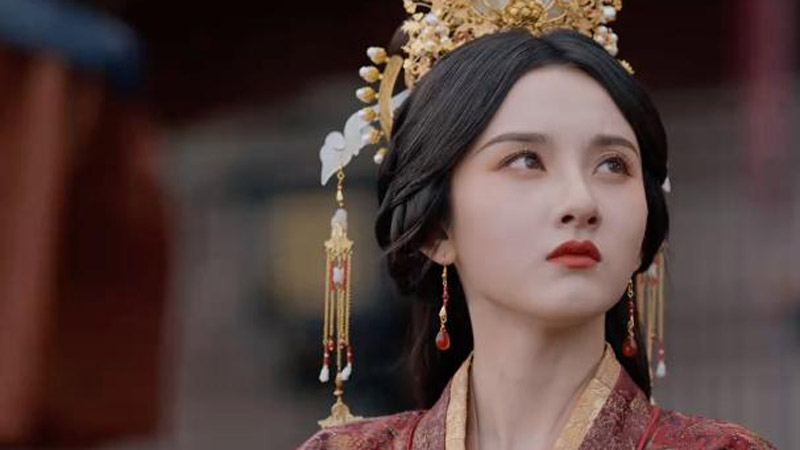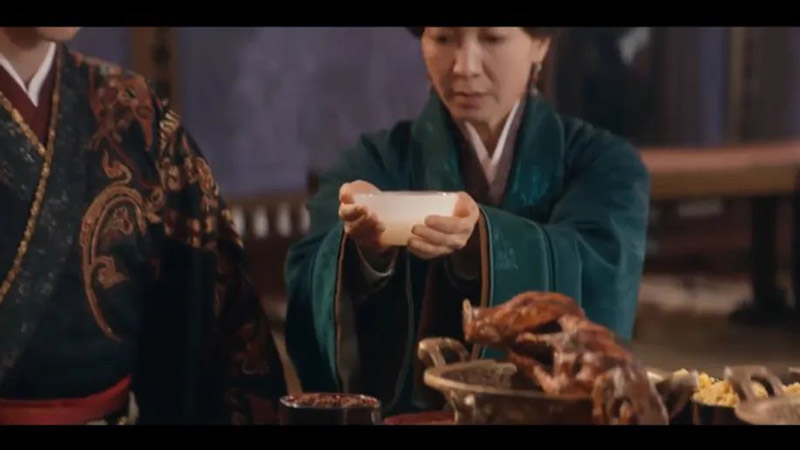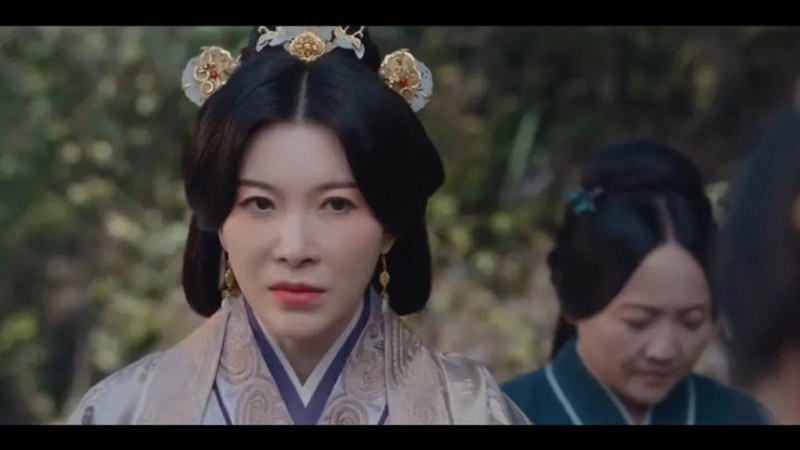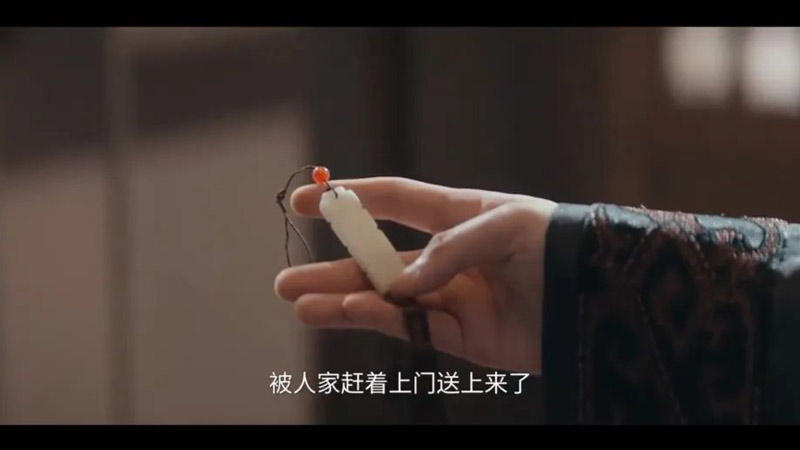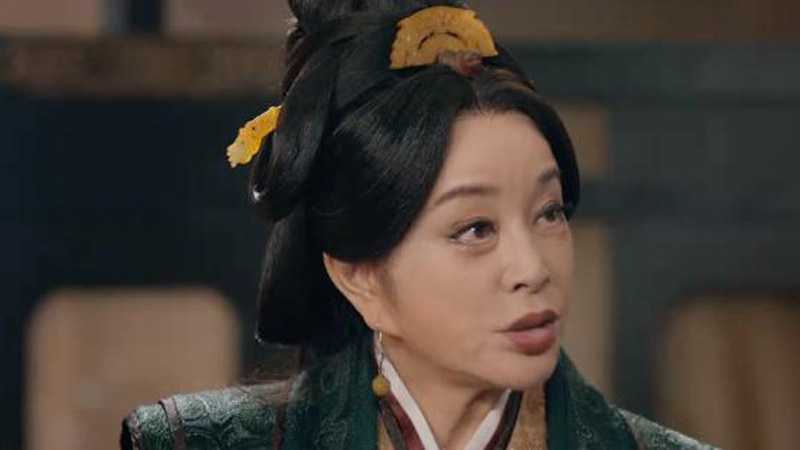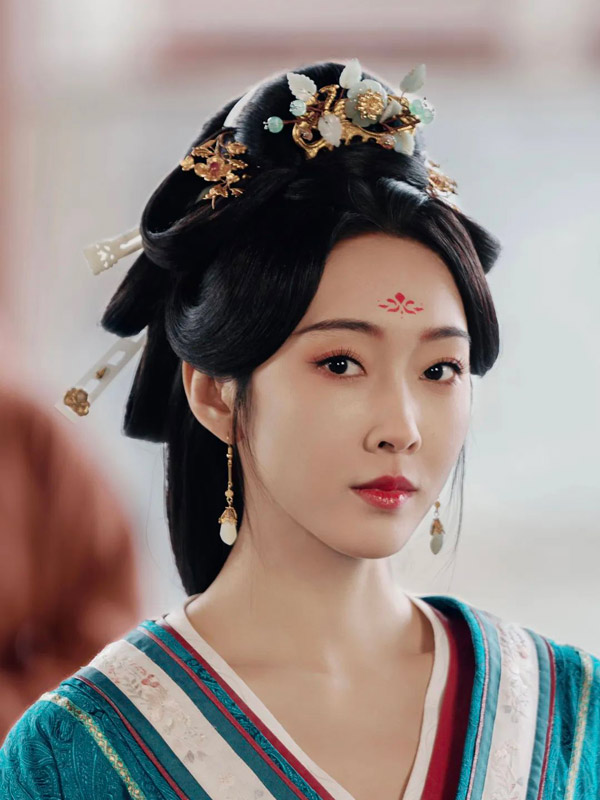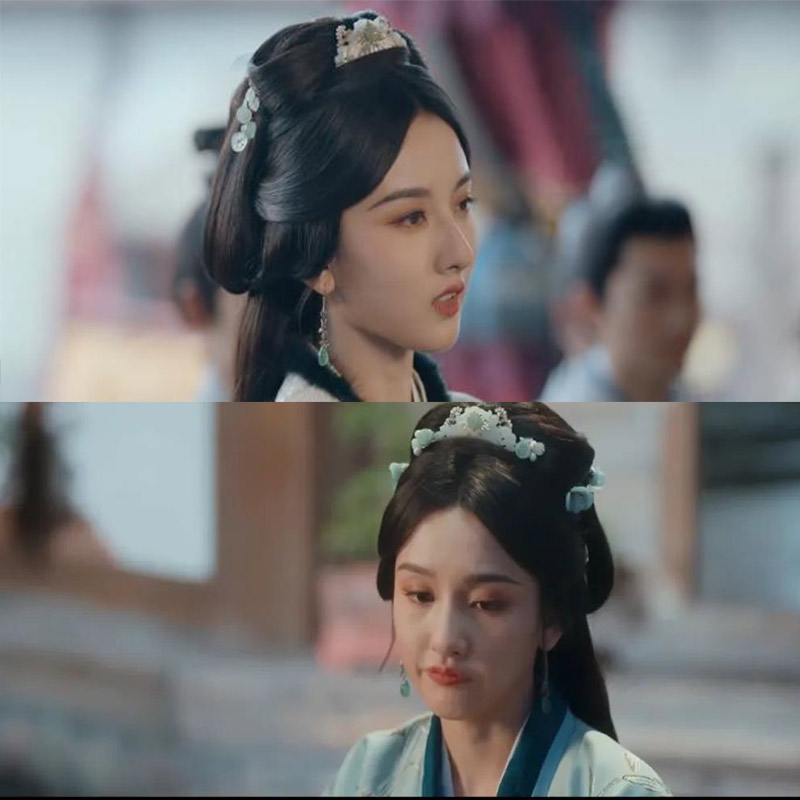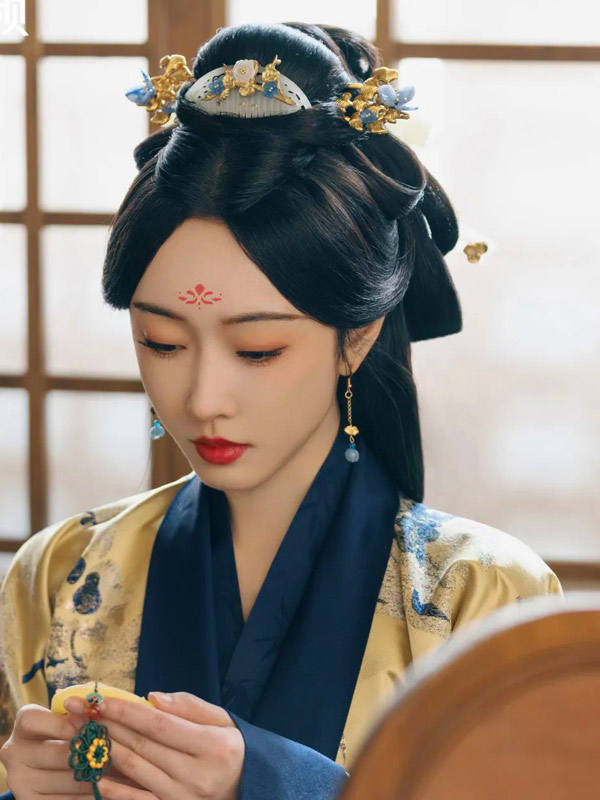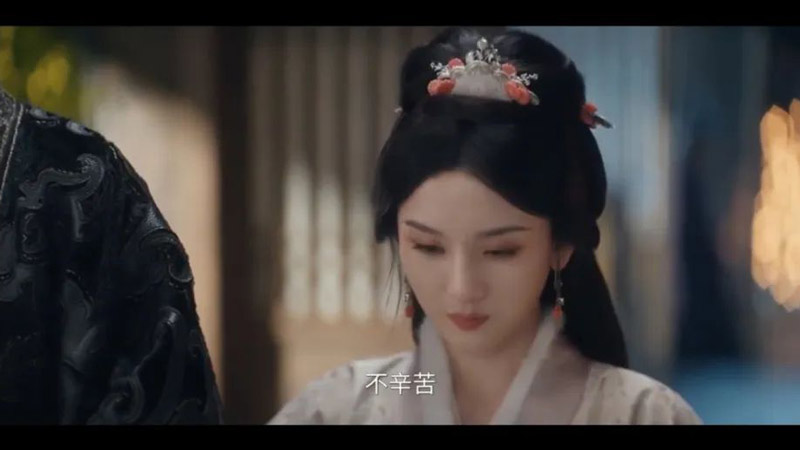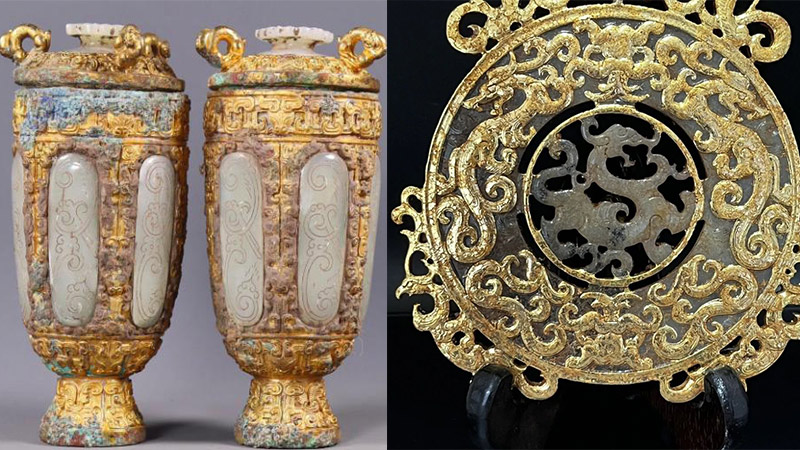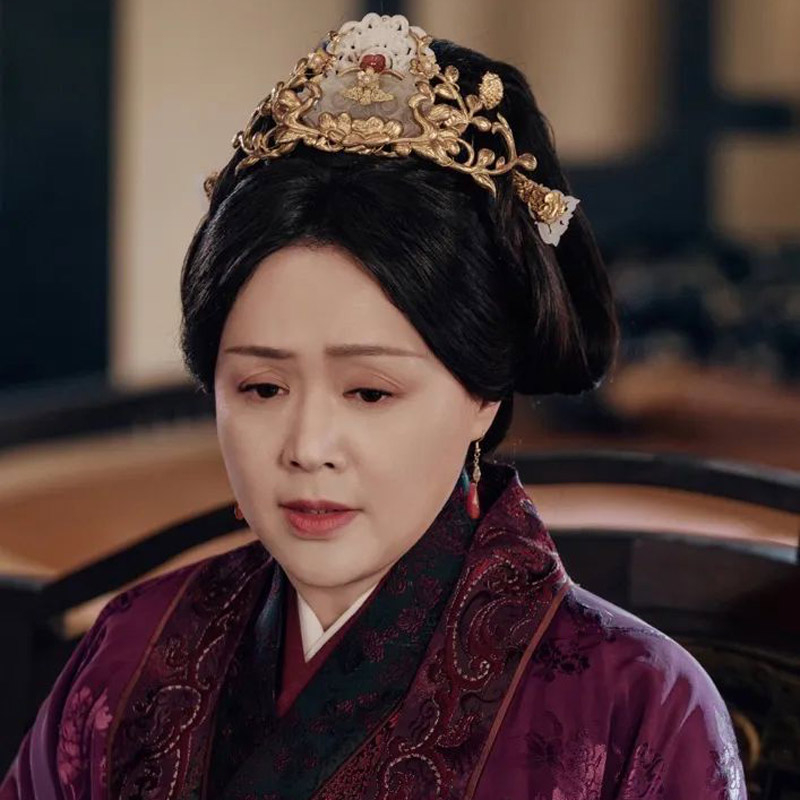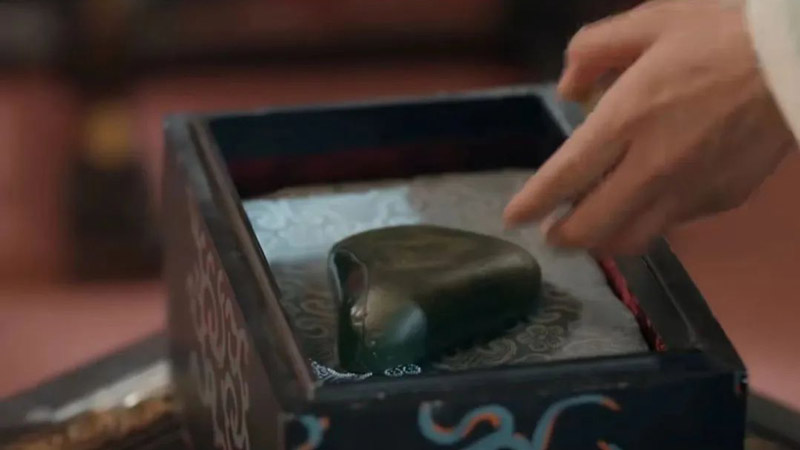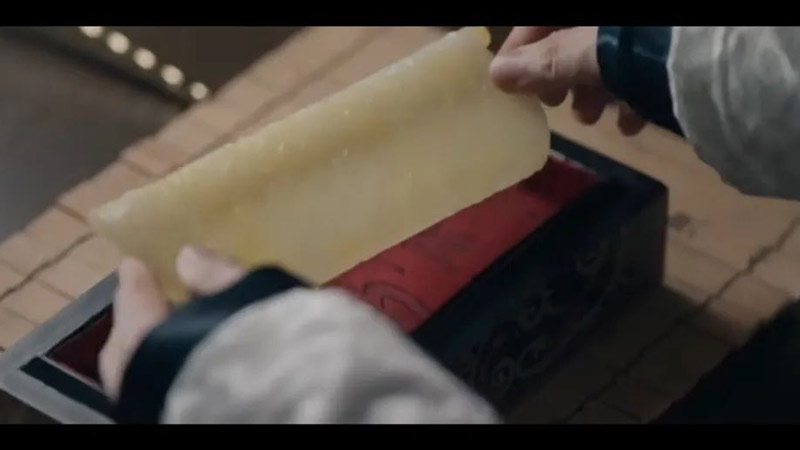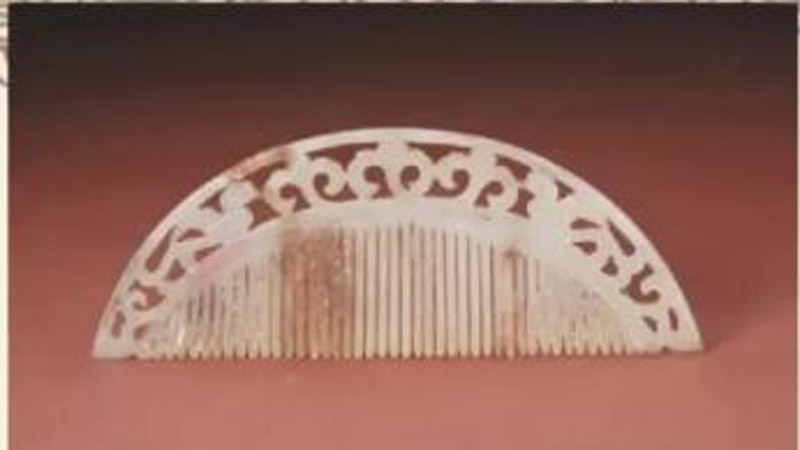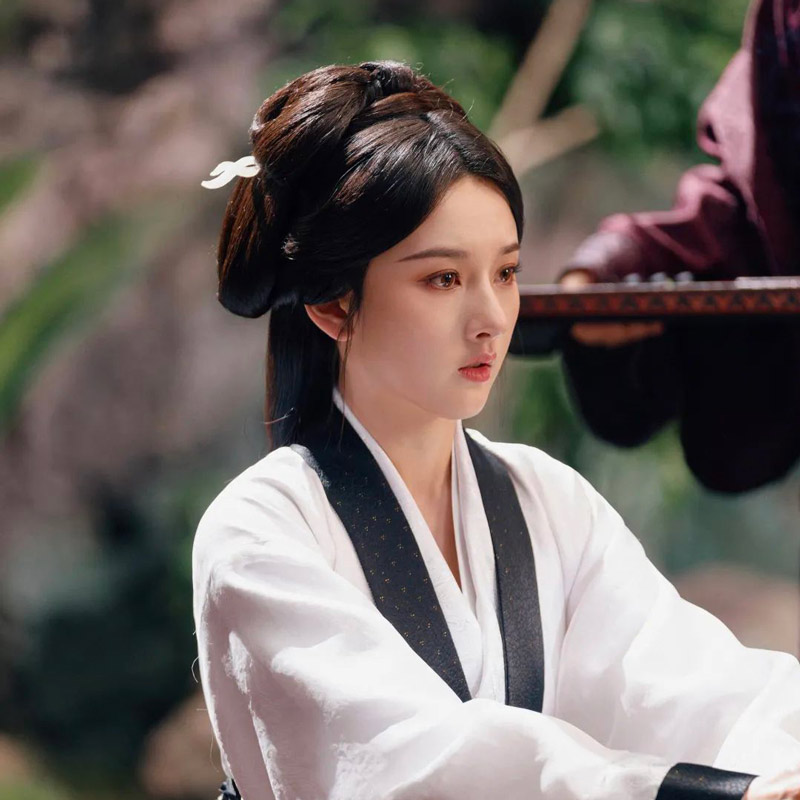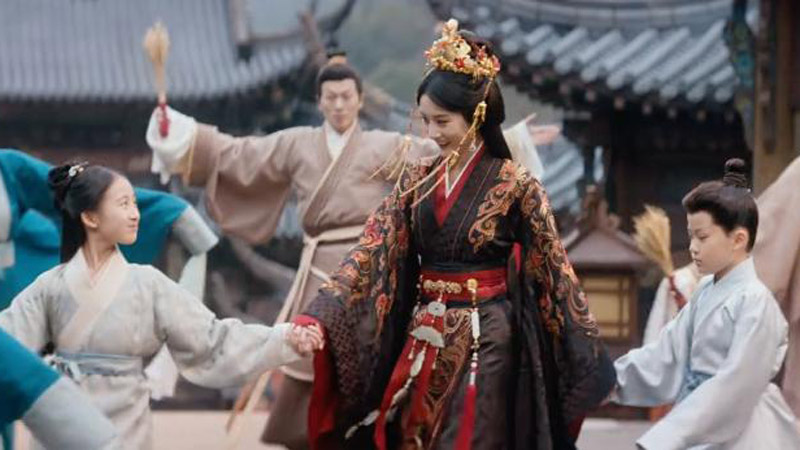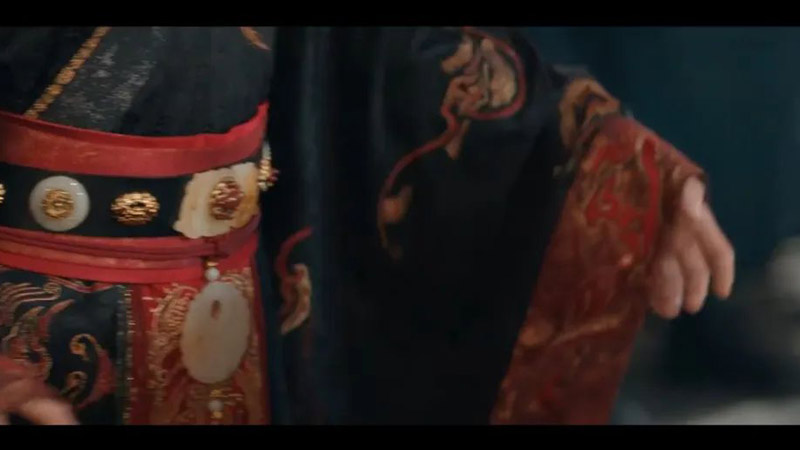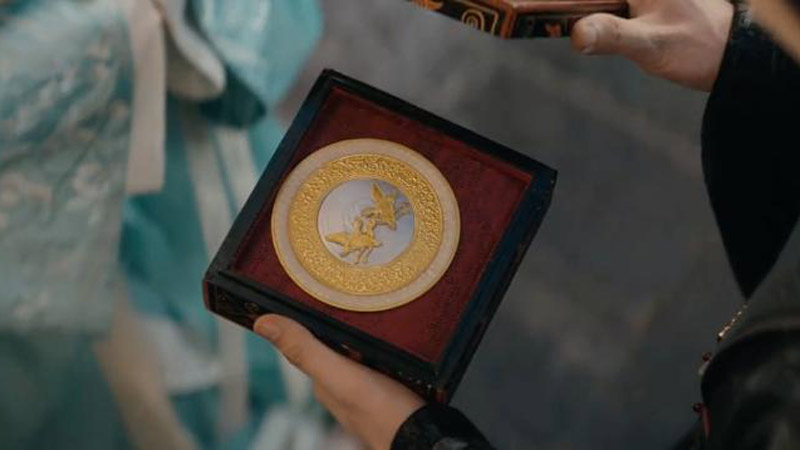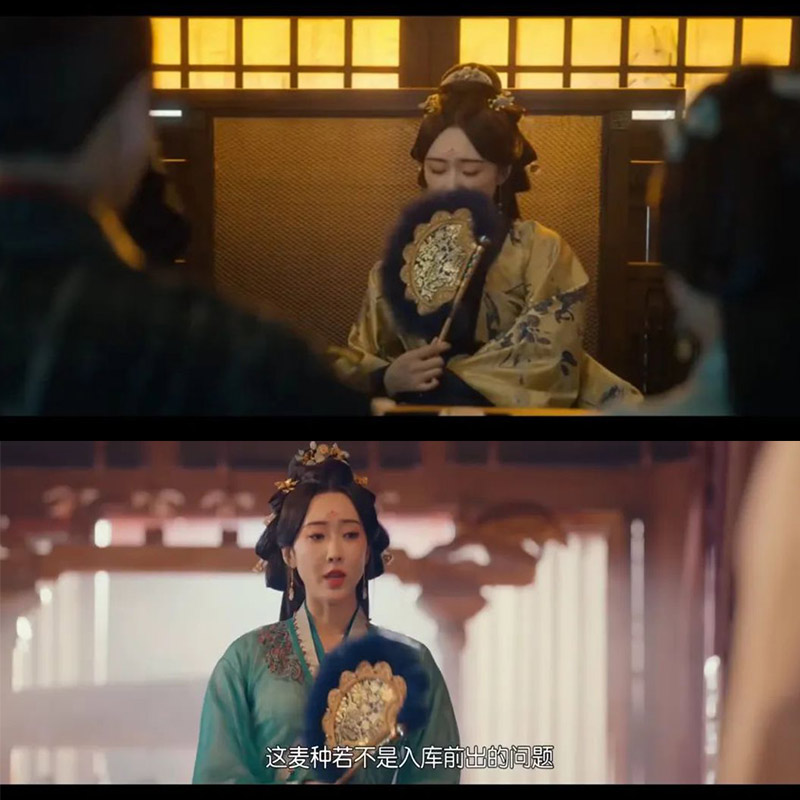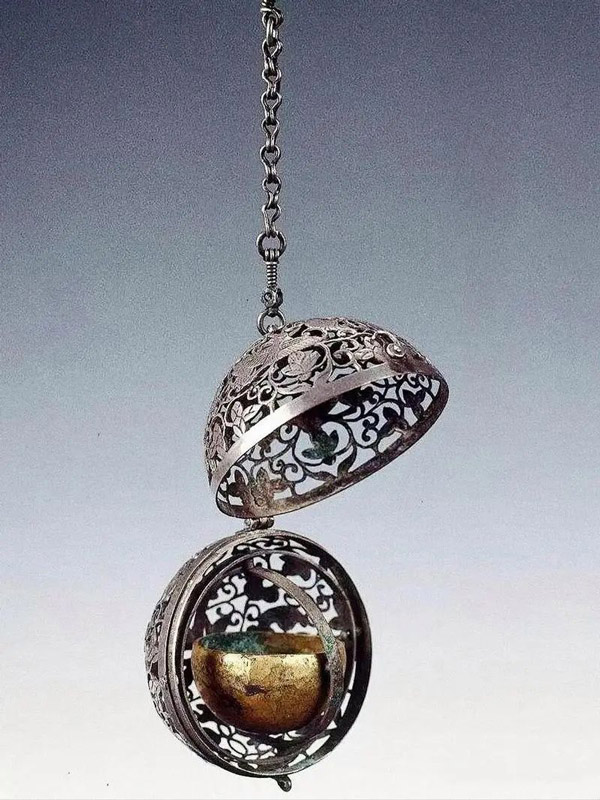You've probably already heard the buzz around The Prisoner of Beauty—this season's hot topic in Chinese historical TV. But let's forget about the plot for a second. As a jewelry person, I couldn't take my eyes off the accessories. The hairpieces, the pendants, the gemstone details—they're not just for show. They're little time capsules of Han dynasty aesthetics, each piece tied to materials and craftsmanship that were actually used two thousand years ago.
The story seems set around the late Eastern Han period (roughly 2nd to 3rd century AD). So let's talk about what jewelry looked like back then—what stones they had, where they came from, and who got to wear what.
First, let's talk about the crown jewel of the era: Hetian jade (a highly prized nephrite jade from Xinjiang). This wasn't something ordinary people could casually buy. Most of it traveled along what historians call the "Jade Road", a network of ancient trade routes connecting Xinjiang to central China. According to excavated Han dynasty documents from Dunhuang, one stone could cost up to 300 qian.
Back then, large-scale mining wasn't really a thing. Miners would wait for seasonal floods to reveal river-polished pebbles, then trek on foot through dangerous mountain valleys to collect them. Super labor-intensive, super limited supply. Which means…if your family didn't have royal blood, chances are, you'd never touch the stuff.
That's why imperial tombs are full of Hetian jade—think jade burial suits (玉衣) and ritual disks (玉璧). Mid-level nobles and government officials? They had to settle for more affordable local jades like Nanyang jade or Xiuyan jade.
 White Jade, Green Jade, and More
White Jade, Green Jade, and More
If you look closely at The Prisoner of Beauty, you'll spot different jade colors, each with its own social coding.
White Jade: Top tier. Almost all the jade plates in the famous gold-threaded burial suit from the Chu King's tomb were made of this.
Green Jade: Usually reserved for large ceremonial pieces, like the massive jade disks found in royal graves.
Yellow Jade & "Sugar Jade" : This is white jade that changed color over time due to weathering. By the mid-Western Han period, yellow jade started showing up in burial goods. It symbolized power and authority—yellow being an imperial color (literally means "yellow like steamed chestnuts," which was a compliment for color quality).
Sugar Jade gets its name from its reddish-brown tone caused by iron exposure. Even rarer, and a big status symbol.
In the show, you'll notice characters from higher ranks often wearing headpieces with yellow jade highlights. That's not just about fashion—it's a subtle nod to their status.
Local Favorites: Xiuyan Jade and Lantian Jade
Not everyone could afford Hetian jade, so more people turned to local materials.
Xiuyan Jade (岫岩玉): This was serpentine-transformed nephrite, softer than Hetian, but easier to carve. It has a waxy, sometimes glassy shine and comes in whites, pale greens, and even yellowish tones. Fun fact: The famous "Jade Pig Dragons" (玉猪龙) from the Hongshan culture were made from this.
Lantian Jade (蓝田玉): Technically a type of serpentinized marble, also softer, with a wide color range—white, pale green, blue-green, yellow-green. Even China's legendary imperial seal—the Heirloom Seal of the Realm—was reportedly made from Lantian jade.
 Agate, Turquoise, Lapis
Agate, Turquoise, Lapis
Agate: Very popular for everyday accessories like earrings and hairpins. Archeologists have found Han dynasty agate pieces in red, green, white, black—you name it. I love the orange agate hairpins with tiny carved floral details that show up in the drama. It's a subtle way of saying: "I'm classy, but not trying too hard."
Turquoise: Called "heaven's stone" at the time. People believed it had a cosmic connection. There's even a Han silk painting from the famous Mawangdui tomb showing constellations drawn with turquoise pigment. You'd also see turquoise inlaid on bronze vessels.
Lapis Lazuli: Imported luxury. After Zhang Qian's diplomatic missions to Central Asia opened the Silk Road, lapis started arriving from places like Afghanistan. Han texts called it things like "Lan Chi" or "Golden Dragon" (兰赤/金螭/点黛), basically early poetic nicknames for its blue-gold sparkle.
If you've noticed the cool, misty blue palette in The Prisoner of Beauty, you're not imagining it. That ethereal, almost melancholic look? A lot of it comes from the use of gemstones like chalcedony and lapis lazuli—materials that naturally lean toward pale blue and smoky tones.
It's basically the jewelry equivalent of that famous Chinese song lyric: "Waiting for you in the misty blue rain". If a character's vibe is cold, distant, or a little untouchable, chances are their accessories lean toward this spectrum.
 Crystal
Crystal
Han dynasty people were already huge fans of clear quartz. You'd see it everywhere—from bead strings and earrings to belt hooks and even small carved animal talismans.
One fun fact: The Western Han already had crystal earrings, and full-on belt hooks made from crystal weren't unusual either. There's even an actual no-inscription crystal seal unearthed near Xi'an, and back in the Warring States period, people were already drinking from carved crystal cups.
What's cool about how The Prisoner of Beauty uses crystal: It's often paired with other materials like agate, glass, or amber to build layered textures, just like people did historically.
Those pale pink accessories you've spotted? They're most likely made to resemble rose quartz—what ancient Chinese called "Furong stone" . When styled with coral beads, the whole look screams gentle, soft, girlish charm.
Coral deserves its own paragraph. By the Western Han, coral had already made its way into central China via trade. One famous historical reference: Emperor Wu of Han used potted coral trees in religious offerings. There's also that legendary "Beacon Tree", a four-meter-tall coral piece presented by the King of Nanyue. And when Empress Zhao Feiyan was officially crowned, her sister sent her red coral as a congratulatory gift—basically ancient bling that screams "I've made it."
 Han Dynasty Jewelry Craftsmanship
Han Dynasty Jewelry Craftsmanship
What really makes Han dynasty jewelry stand out—both historically and in the drama—is how they managed to do complex gem-in-metal inlay work with the tools they had.
Here are a few of the go-to techniques of the time:
Gold and Silver Wire Inlay (错金银工艺): They'd carve channels into bronze, press gold or silver wire into the grooves, then polish it flat. Later, they upgraded to a mercury-gilding technique called "gold coating method" (金涂法), where a gold-mercury mix was applied and then heated so the mercury evaporated, leaving just the gold pattern.
Edge-wrapped Inlay (包边镶): This is where metal was shaped with a sawtooth edge to hold thin jade pieces in place, like a very early bezel setting.
Gilded Inlay (鎏金嵌玉工艺): A groove would be cast during the making of the metal piece, jade inserted afterward, and then the whole thing gilded. This explains why some headpieces in The Prisoner of Beauty have that distinct mix of metal-and-stone detailing.
 Raw Jade
Raw Jade
One of my favorite jewelry moments in the show? That scene where Xiao Qiao takes a raw jade stone (玉璞)—a gift from Madam Xu to Wei Shao—and sends it off to be turned into a bracelet.
From the color and texture on screen, it looks most likely like a piece of Hetian green jade (和田碧玉). There's no complicated carving, no high-gloss polish—just that untouched, natural surface. It's giving "beauty in simplicity," very much in line with the drama's family themes and the characters' emotional arcs.
Historically, though, white jade was way more common for formal jewelry. Green jade like this was less frequently used and often just for decorative or ritual accents. But for the story? Perfect metaphor material.
There's also a cute side plot about an armrest (臂搁)—basically a wrist support used for calligraphy.
While bamboo was the typical material (easy to carve, easy to source), the one shown in The Prisoner of Beauty is made of white jade. Considering the size, the curve, and the need for flawless stone with no cracks, making a jade armrest like that would've been crazy expensive back then. Definitely something a rich scholar or nobleman would own just to show off.
 Hair Accessories
Hair Accessories
In the Wei and Jin periods, jade combs and hairpins became total fashion staples. The drama nails this detail. You'll often spot female characters wearing simple, elegant jade combs tucked into their hair buns.
The beauty here is subtle: clean lines, soft luster, and just enough weight to hold the hairstyle in place. Not screaming for attention, but definitely saying, "Yes, I have taste."
What I love about the jade hairpieces in The Prisoner of Beauty is how they manage to look both low-key and incredibly refined. The natural softness and polish of the jade give this sense of quiet luxury. Add in simple, clean carving, and you get a piece that feels timeless—nothing too ornate, but full of character.
Unlike the showier gold-and-gem hair accessories, these jade pins sit at the heart of the hairstyle, literally and visually. This choice fits perfectly with the Wei-Jin era's obsession with natural beauty and effortless elegance.
Let's talk hairpins. By the Zhou dynasty, girls would go through a "coming of age" hairpin ceremony at 15 (及笄礼). It was a big deal—your first hairpin marked adulthood. Women's hairpins were mostly decorative after that.
For men, though, hairpins had a more practical use: keeping their formal headgear in place. These pins came in wood, bone, jade, bronze, gold, silver—you name it. But for nobles and scholars? Jade was the top choice, often in white or green tones, symbolizing gentlemanly virtue.
Some higher-ranking men even wore crown-style headpieces with built-in gemstone and pearl inlays.
If you've seen any shots of dangling ornaments swaying with each step, that's a Buyao (步摇). The name literally means "step-shaker."
Made with gold wire twisted into leaf shapes and bead chains, the whole point was for the piece to move when you walked—catching light and making a subtle statement. There's even an ancient dictionary, Shiming, that describes it: "Beads hanging from the top, shaking as you walk."
 Waist Accessories
Waist Accessories
Before belt buckles were a thing, people used belt hooks (带钩).
They go way back—early versions show up in Neolithic sites like Liangzhu culture (良渚文化, around 3000 BC). After disappearing for a while, belt hooks made a big comeback in the Spring and Autumn period and stayed popular through the Warring States and Han dynasty.
Materials? Bronze, jade, gold, silver. Techniques? Gold and silver inlay, jade carving, and more. After the Wei-Jin period, belt hooks slowly phased out and belt clasps (带扣) took over.
Another must-see jewelry detail in The Prisoner of Beauty: jade pendants (玉佩/禁步).
Han dynasty fashion rules literally said, "A gentleman never parts with his jade." It wasn't just for looks—wearing jade was about moral character and social standing.
In the drama, many female characters wear long flowing Quju Shenyi robes (曲裾深衣) with jade pendants hanging at the waist. The idea? When you walk, the pendants should sway gently—not too fast, not too slow—symbolizing grace and discipline.
For high-ranking nobles and royalty, pendant sets (组佩) followed strict design codes. Historical texts like the Book of the Later Han (后汉书) even list out the components: strings connecting different jade pieces like Zhuang, Yu, Chongya, and Huang—each shape symbolizing heaven, earth, and cosmic order.
Basically, your pendant setup wasn't just an accessory. It was a walking lesson in Confucian ritual hierarchy.
 Bronze Mirrors, Dao Fan and Perfume Ball
Bronze Mirrors, Dao Fan and Perfume Ball
Let's not forget bronze mirrors. The Han dynasty was peak era for them.
People used them daily for grooming, but they were also big in rituals, gifting, and even romantic symbolism. Western Han mirrors were mostly simple, but by the Eastern Han, things got fancy: dragon designs, cloud motifs, four-symbol guardian animals, even mini story scenes carved into the back.
Techniques like gilding, silver plating, and gold-and-silver inlay became common. You'll spot these details in The Prisoner of Beauty if you pay attention to the props. One standout? That custom-designed, gold-framed, white jade-backed chest protector mirror, which honestly looks like something straight off a couture runway.
And finally, that giant, almost over-the-top Dao Fan (刀扇)—yes, the fan shaped like a knife blade or a single panel door.
Historically called Bianmian or Zhangmian (便面/障面), these fans weren't just for cooling off. Women used them to cover their faces, avoid awkward social encounters, or create a little mystery.
For nobles, larger Dao Fans carried by attendants were status symbols—like ancient walking billboards for power and wealth. Some were made of simple bamboo and silk, others decked out with beads, gems, and decorative trims.
In The Prisoner of Beauty, the fan's exaggerated size and luxurious detailing work as both a style statement and a personality hint: perfect for a character who's wealthy, manipulative, and always hiding behind layers—literally and figuratively.
Let's take a moment to appreciate a prop that doesn't get enough screen time but totally deserves it—the Xunlong (薰笼), or more specifically, the perfume ball that appears in The Prisoner of Beauty.
What looks like a simple metal sphere is actually an engineering flex from ancient China. Made of two hollowed-out, perforated metal hemispheres, this little thing houses an internal gyroscope-like structure. No matter how much you roll or shake it, the scented herbs inside won't spill out.
This clever design was first invented by a Han dynasty artisan named Fang Feng. Later on, during the Tang dynasty, it was upgraded and became more popular—there's even historical proof that Yang Guifei, one of China's most famous imperial consorts, owned a silver perfume ball engraved with grape and bird patterns (葡萄花鸟纹银香囊).
Historically, these fragrance holders weren't just about smelling nice. They also worked as mood boosters, insect repellents, and even portable air fresheners for clothing. In a way, they were the ultimate mix of functionality, art, and lifestyle aesthetics. The fact that The Prisoner of Beauty included one? Pure attention to detail.
